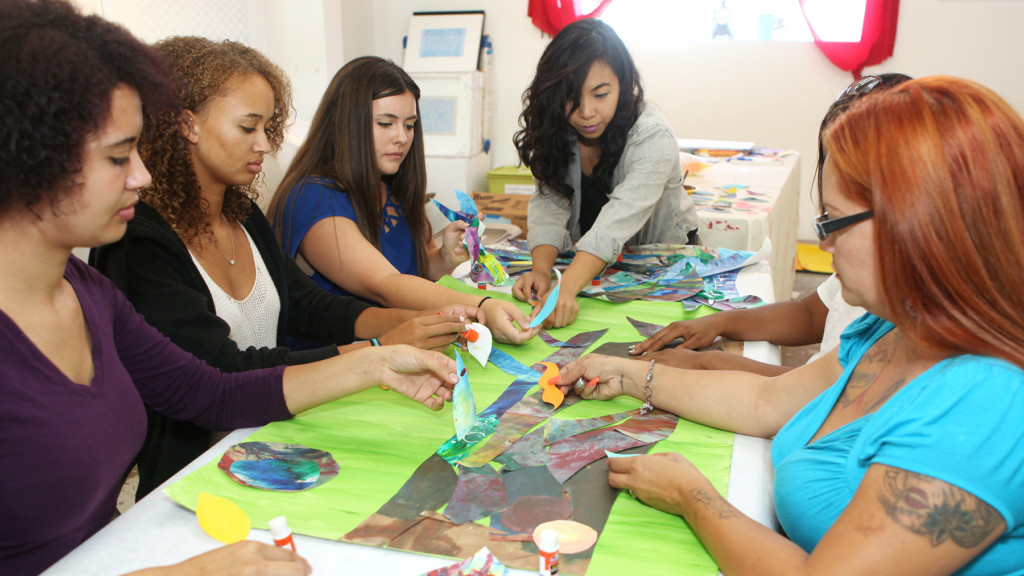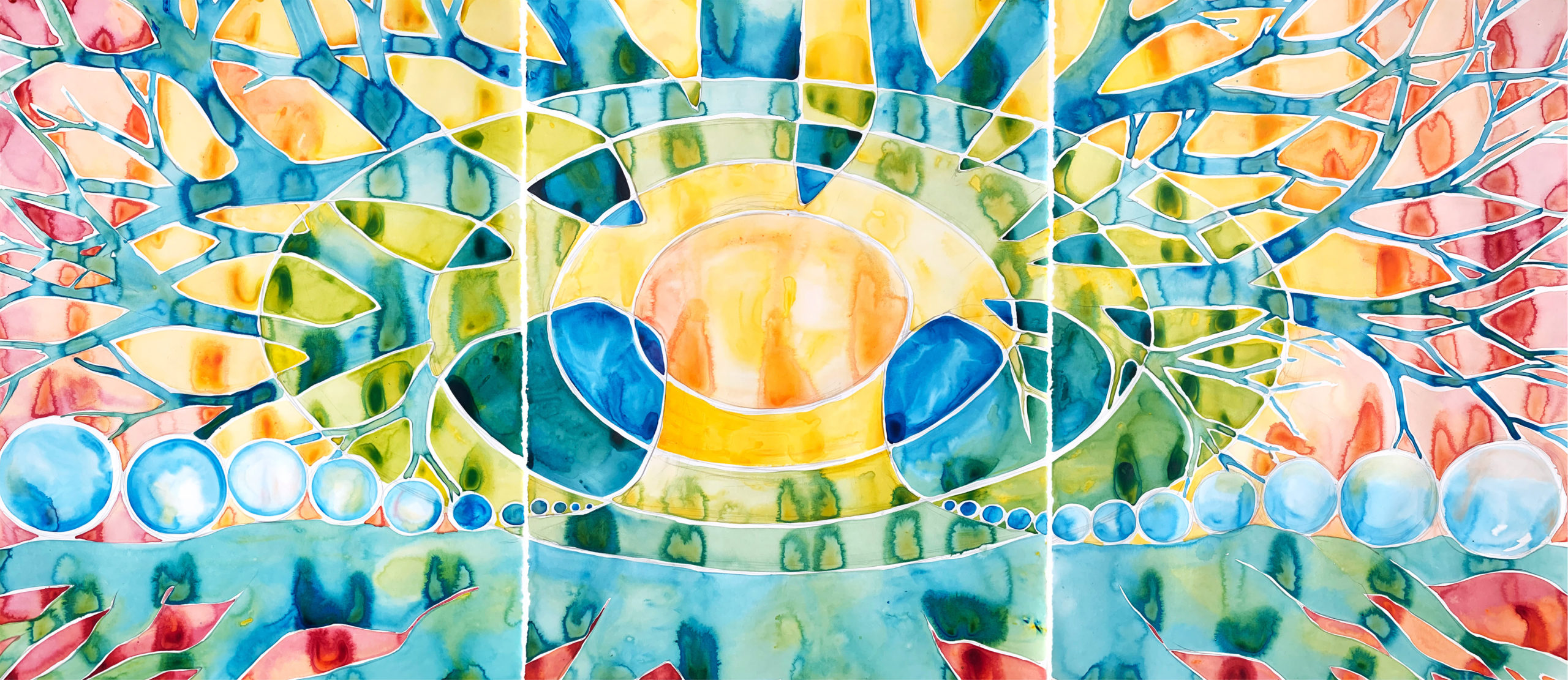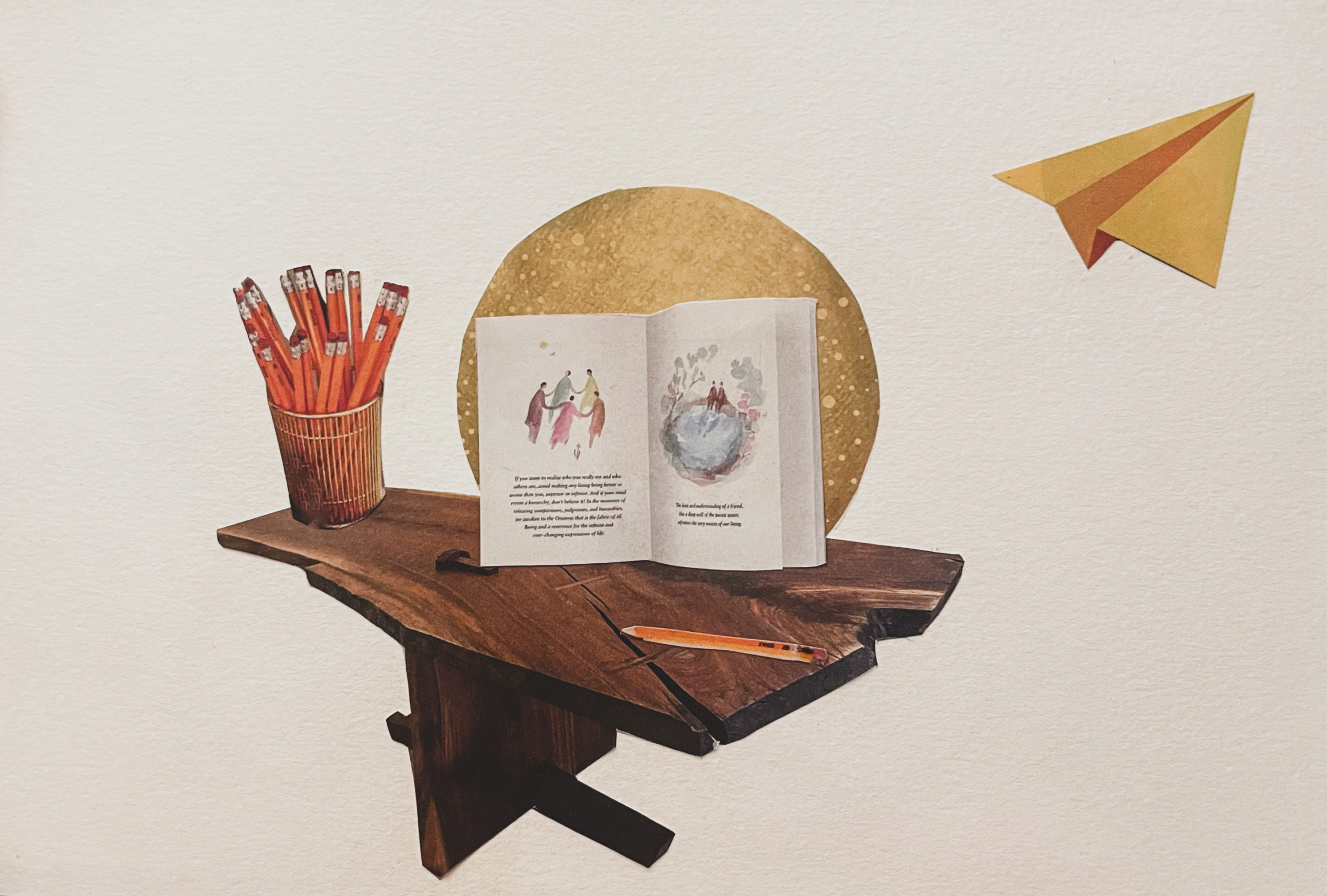by Sharon B. Uy, LMFT, ATR
Windows Facilitator & Workshop Author
Los Angeles, California
Journaling has been a popular form of self-expression and reflection for centuries. The practice has been around since ancient times, used for accounting and for documenting public records, and for recording personal feelings and both significant and insignificant events. I wonder if they recognized back then, as we do today, its importance in managing stress, improving overall well-being, and boosting creativity.
I haven’t always been consistent with my own journaling practice, but I have had one, on and off, for many years. My journal has served different purposes throughout my life. As a young girl, my pink padded diary with a golden lock and key acted as the keeper of my childhood secrets and my innermost thoughts. During adolescence, my journal was the historian of my day-to-day life, as I processed all the new feelings that come with growing up, transitioning from harmless crushes to romantic relationships and all the complications that come with them. As an adult, my journal has been a mirror, a different kind of therapist, helping me parse out themes and solutions when my friendships or relationships feel troubled, or my life feels like a puzzle unsolved.
My journal has been a sounding board, a nonjudgmental holder of all the spaces and places inside of me.
And sometimes, it’s the simple act of taking the time for myself that heals.
As you can see, there are, perhaps, innumerable benefits and ways to do it, but here are a few ideas to get you starting (or expanding) your own journaling practice.
Benefits of journaling:
-
- Enhance self-awareness. Oftentimes, my clients enter our session with a journal, both to relay what’s gone on since our last session, and to jot down pieces of insight they want to remember later. Journaling serves as a way to keep track of emotions and feelings and to become aware of patterns, providing an opportunity to gauge what to keep and what to let go of.
- Manage stress and anxiety. Since I don’t have my own therapist on call 24/7 (does anyone?!), the next best thing is my journal. Writing about difficult situations allows me to get that energy out of my system, while also reflecting on the how’s, the why’s, and ways to move forward. It also feels good to know that I’ve helped myself get to the other (or at least another) side of a situation.
- Improve mental and emotional well-being. A 2018 study showed that after journaling for 15 minutes, 3 days a week for 12 weeks, participants showed decreased symptoms of anxiety and depression. Journaling can be a safe space to regularly and honestly express emotions, which is much healthier than keeping it all inside.
- Nurture creativity. You’re effectively documenting your own life story when you journal. Which means that you can write the rest of your story too! As a writer and an artist, I’ve found that having a regular practice of jotting down little poems, drawing doodles, and free writing further increases my own creativity.
- Foster gratitude. Journaling can promote gratitude in two ways. One is that you can look back and see that you’ve come out on the other side after having gone through something challenging. The other is that journaling helps you recognize and record the existing beauty in your life and everything you have to be grateful for right now.
- Promote mindfulness. The act of writing is a very “now”-based activity, but you can take it steps further. Notice how you feel in your body when you write about something you’re struggling with versus something you’re grateful for. Watch the way your hand moves and notice your breath. I use journaling partly as a way to practice my penmanship while helping me gauge how I’m doing. If my writing isn’t so legible, I was probably feeling anxious and rushed. The more mindfully I write, the more legible my handwriting is, and the more I know I’m being present.
Types of journals:
-
- Daily/regular journal. This can look like anything you want: a leather-bound journal or a pad of legal paper. What matters is that you have a designated space to place your reflections.
- Art journal. In my own art journal, I draw little doodles, or make a collage, but usually paint with watercolor, to reflect on my day or capture something that popped into my head. I use these watercolor sketchbooks. If you prefer art prompts, you can use this guided art journal.
- Gratitude journal. Write down one to as many things as you can find that you’re grateful for. This is best done in the evening as a way of reflecting on the day. If you’d like to merge gratitude and art, AWBW has a fantastic resource available with prompts for grounding gratitude practices!
- Worry journal. If you go this route, I suggest keeping one in tandem with another kind of journal. A worry journal allows you to write down a worry and then physically put it away. “Here is my worry, thank you for what you’re teaching me, goodbye!” This comes in handy before heading to sleep, to empty the mind. If you’d like to take it a step further (and have the energy to do so), you can brainstorm possible solutions for your worries. You can also cross worries off of your list once they’re gone.
- Bullet journal. Mix the practical and logistical with the mental and emotional. This kind of journaling helps you keep track of daily, weekly, and monthly to-do’s, emotions, and goals, in an inherently artistic way.
- Dream journal. Naturally, this is best done upon waking. I have a 200+page word document where I house all of my (mostly kooky) dreams.
- Here are some guided journals if you need a little more inspiration: The Untethered Soul Guided Journal. Core Values journal. The Five Minute Journal. A Year of Zen.
- Or, you can design your own!
My favorite journal prompts (both daily and occasional):
-
- This is an idea for a daily one from a podcast featuring Elizabeth Gilbert: Have a conversation with Love (or your higher power). Write to Love, and write down what Love is telling you in return.
- This daily one was suggested to me by my therapist: Before I write down my to-do’s for the day, I write down my to-be’s. Who and what do I want to be today? How do I want to show up in my life and in the lives of others?
- An occasional one inspired by the book The Untethered Soul (Michael A. Singer): Who am I? The I that is beyond the descriptors (name, age, relationship status, job). As he says, “Who is the I that sees?” This is a good prompt for getting really introspective, mindful, and grounded in the Self.
- An occasional idea from a friend, when contemplating friendships and relationships: What are my values, and what are their values? Which values are shared, and where is there room to bridge the divide?
How to start journaling:
-
- Choose one or more from the above ideas. Remember, you can use Google Docs, a pad of paper, a bound journal, the Notes app on your phone, or a journal app – whatever works best for you.
- Set a regular schedule to help make it a habit.
- Keep it somewhere close where you’ll be able to see it easily.
- Set a timer, or go with the flow and see where and how long it takes you.
- No pressure! It’s okay if you miss a day or two or three, or if all you can write down is one word. This isn’t an essay you’ll be graded on. This is your time to release perfectionism and comparison, and to be honest and vulnerable with yourself.
Above all, know that journaling is for you. It can be for whatever you want it to be: reflection, releasing, creating a habit, for a specific purpose, or for no purpose. Maybe you never look at it again (I rarely do). Maybe you go over it once in a while to see how far you’ve come. Maybe you burn them (safely). Maybe it’s all of the above at different times. The ways to journal are as varied as there are individuals and moods and feelings within ourselves, which is to say, ever changing. Whether you’re starting from scratch or adding to your self-care routine, know that you’re journaling your way to improving your mental, emotional, and spiritual health.
by Sharon B. Uy, LMFT, ATR
Windows Facilitator & Workshop Author
Los Angeles, California
Want to bring healing art programming to your community?
A Window Between Worlds (AWBW) supports hundreds of direct service organizations across the country to incorporate creative expression into their work with trauma survivors. With this blog we uplift the voices of our art workshop facilitators and participants. We invite you to take in this perspective, notice what resonates and explore how it may fit into your life.





